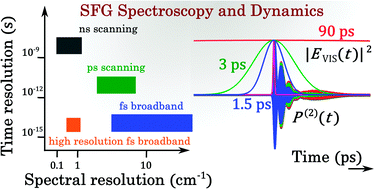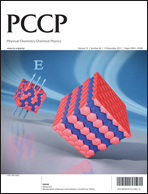Unified treatment and measurement of the spectral resolution and temporal effects in frequency-resolved sum-frequency generation vibrational spectroscopy (SFG-VS)
Abstract
The lack of understanding of the temporal effects and the restricted ability to control experimental conditions in order to obtain intrinsic spectral lineshapes in surface sum-frequency generation vibrational spectroscopy (SFG-VS) have limited its applications in surface and interfacial studies. The emergence of high-resolution broadband sum-frequency generation vibrational spectroscopy (HR-BB-SFG-VS) with sub-wavenumber resolution [Velarde et al., J. Chem. Phys., 2011, 135, 241102] offers new opportunities for obtaining and understanding the spectral lineshapes and temporal effects in SFG-VS. Particularly, the high accuracy of the HR-BB-SFG-VS experimental lineshape provides detailed information on the complex coherent vibrational dynamics through direct spectral measurements. Here we present a unified formalism for the theoretical and experimental routes for obtaining an accurate lineshape of the SFG response. Then, we present a detailed analysis of a cholesterol monolayer at the air/water interface with higher and lower resolution SFG spectra along with their temporal response. With higher spectral resolution and accurate vibrational spectral lineshapes, it is shown that the parameters of the experimental SFG spectra can be used both to understand and to quantitatively reproduce the temporal effects in lower resolution SFG measurements. This perspective provides not only a unified picture but also a novel experimental approach to measuring and understanding the frequency-domain and time-domain SFG response of a complex molecular interface.


 Please wait while we load your content...
Please wait while we load your content...